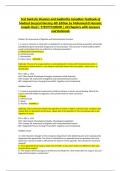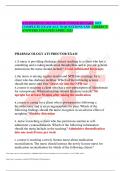Exam (elaborations)
Brunner and Suddarths Canadian Textbook of Medical-Surgical Nursing 4th Edition by Mohamed El Hussein; Joseph Osuji |
- Course
- Institution
- Book
Brunner and Suddarths Canadian Textbook of Medical-Surgical Nursing 4th Edition by Mohamed El Hussein; Joseph Osuji |
[Show more]












